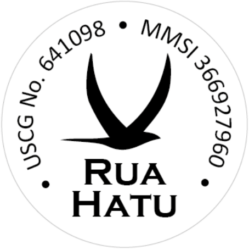After ten days of relaxing in Dominican Republic, and waiting out a tropical storm that caused the “largest rainfall event ever” on the island of Hispaniola, we finally receive clearance from the Dominican Armada (Navy) to depart for Puerto Rico. Just like the rest of our Caribbean journey, the winds wouldn’t exactly be in our favor, but we pushed onward nonetheless to reach our intended destination.
Departure Procedures
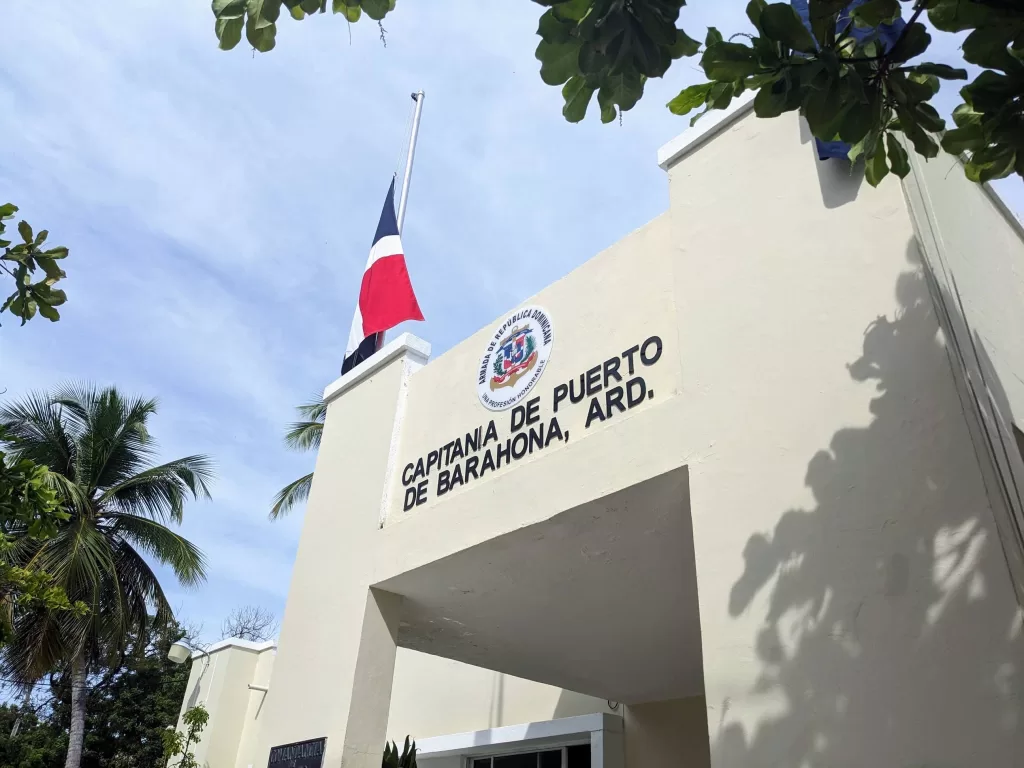
As we watched the forecast for the approaching storm, we hoped to use the tropical disturbance to our advantage and make progress toward Puerto Rico. Such storms often calm and even reverse the prevailing easterly trade winds, giving us a unique opportunity to sail downwind going east in this part of the Caribbean. With the worst of the winds forecast to stay well west of the Dominican Republic, our plan was coming together for a comfortable, albeit rainy, passage. But the Armada, who needed to authorize us to depart, did not see things the same. Citing concerns over the rain, they would not permit us to depart until the storm had cleared.
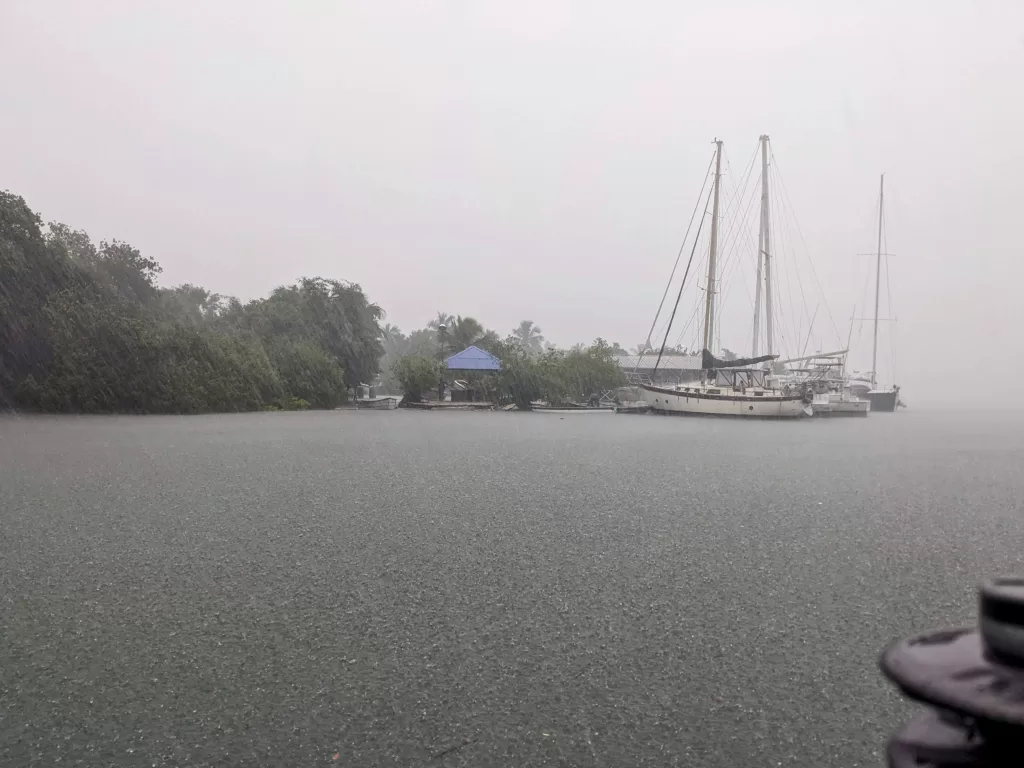
So instead, with plenty of food and provisions onboard, we sat at anchor and endured some of the heaviest rainfall we have ever experienced. We normally collect rainwater during heavy downpours to account for the lack of solar power and thus limited water-making capabilities, and this time we found our 5 gallon bucket full and overflowing about every 30 minutes! Within a day our tanks were completely filled!
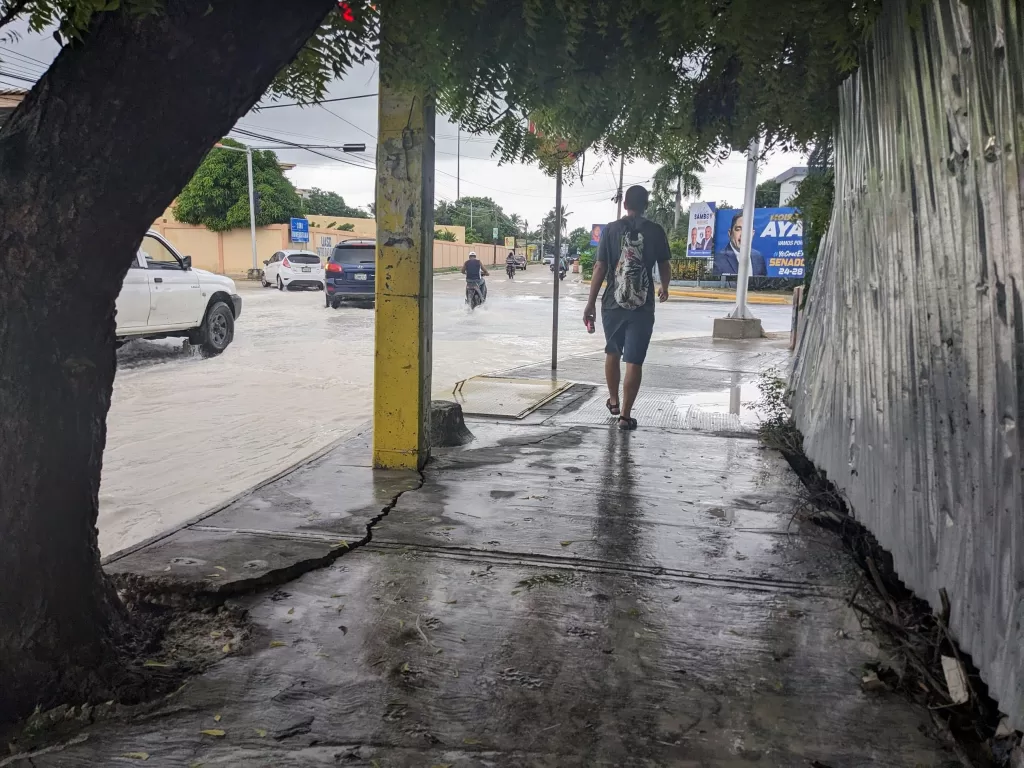
With so much runoff, the harbor quickly turned milky white as the surrounding hillsides eroded. In town, the runoff caused major flooding in the streets and erosion along the shoreline. As the worst of the storm moved past, and the rainfall diminished, the streams and drainage ditches remained charged with water from the surrounding hillsides. Even after the rain stopped, portions of the main road through town were still entirely covered with fast flowing water.
Sea Debris
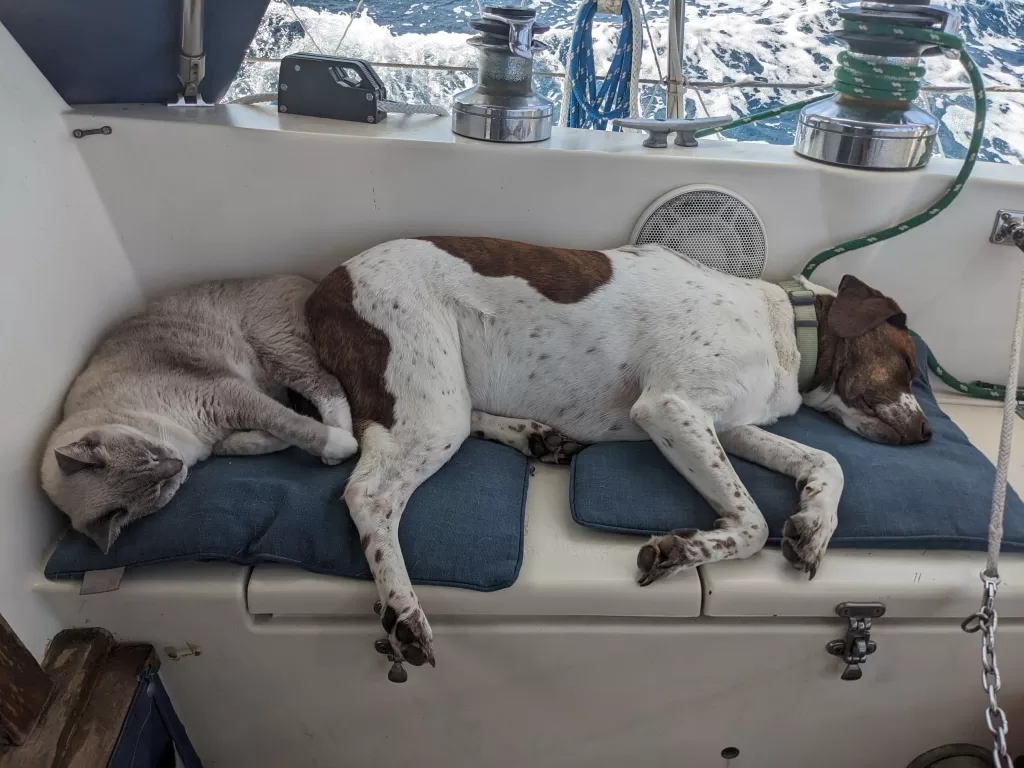
Three days after the storm struck, the skies cleared and we prepared to leave. The Armada and various other local authorities briefly inspected Rua Hatu, stamped our passports and issued our “despatcho”. We motored out of the harbor into a light breeze but the forecast called for the return of prevailing strong east winds. By sunset, we were motor-sailing into 20 knots of wind and choppy seas, making slow progress towards Santo Domingo.
But sunrise brought a welcomed shift to the NNE and a strong following current that kept us sailing fast all day. We dodged debris washed out by the rainfall all along the southern coast; trash, branches, logs, even entire trees!
Mona Passage
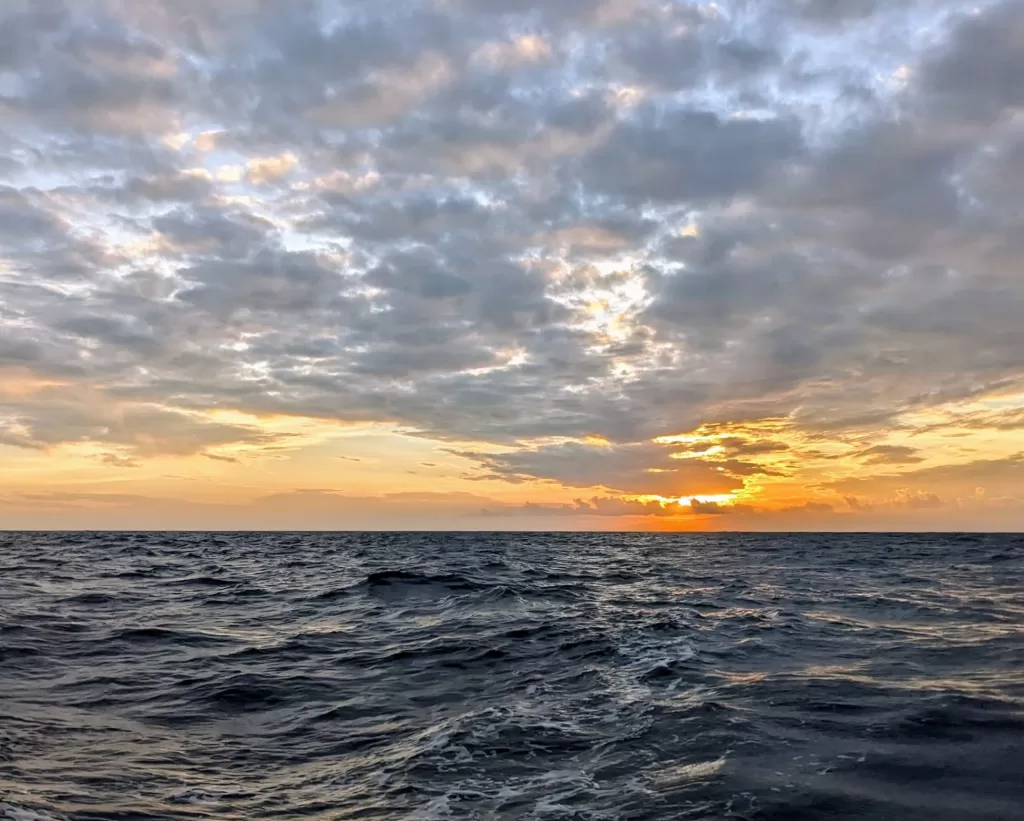
As the sun set on our second night of the journey we approached the southeastern most point of the Dominican Republic, Isla Saona, and the start of the Mona Passage. The NNE winds had shifted back eastward and we motor-sailed towards the tip of the island. Once there we faced 25 knots of ENE wind and steep, choppy swell. The forecast called for calmer conditions the following morning, so we backtracked and anchored along an empty stretch of beach. Everyone got a good night sleep before trying again.
Unfortunately, our second attempt just after sunrise was even more turbulent than our first, with steeper, taller waves and even stronger winds pounding against us. Yet again, we turned around and anchored to wait for another promised lull. That lull finally came around 11PM and we motored around the corner towards Puerto Rico on our third attempt.
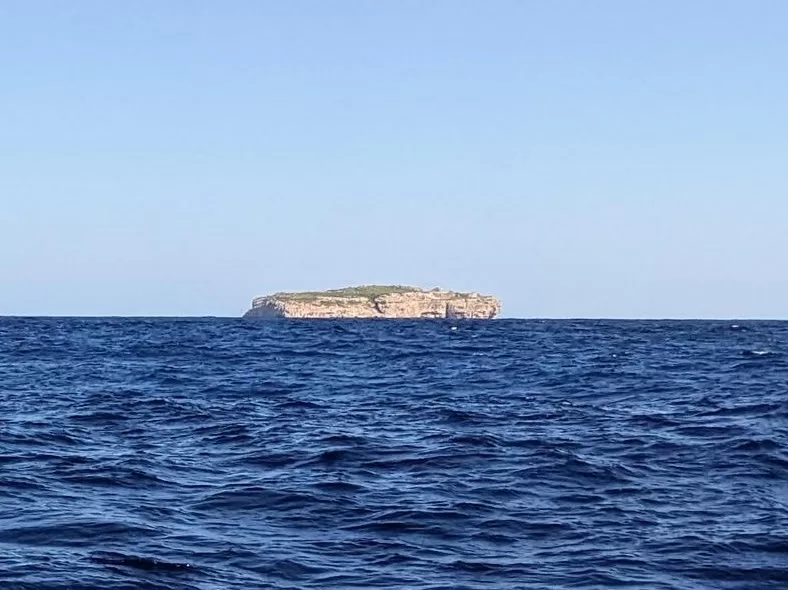
An American Thanksgiving Arrival
The Mona passage began with large, rolling Atlantic swell that built steadily throughout the morning. Unlike the relentless, short-period Caribbean swell we fought thus far, the waves from the Atlantic were much longer, but also much taller. Soon the bumpy ride became smoother and we gradually gained speed. By late afternoon we motored past Isla Mona, the swell and wind subsiding as we came closer to Puerto Rico’s western shore. 250 nautical miles out from Barahona we finally dropped anchor in the calm waters of Bahia Boqueron, Puerto Rico.
In total we had covered over 1,000 nautical miles since leaving Panama less than a month prior, but all of that felt light-years behind us. Now, with the engine off, the sounds of the Thanksgiving celebrations onshore came through reminding us we were definitely back in the U.S.. To that end, we opened our phones and announced our arrival to the U.S. authorities using an app! None of the scavenger hunts for officials, multiple office visits, copies upon copies of paperwork, rubber stamps or general bureaucratic messiness we had become so accustomed to in foreign ports.
No, we just scanned our passports with our phone’s camera, entered some info about the boat and waited for a video call from an officer of the US Customs and Border Protection (USCBP). Once on the screen, the officer asked us a few questions about the food onboard (which wasn’t much), wished us a happy holiday and welcomed us to the Puerto Rico! After a long safe passage, and an easy arrival in a new destination, we certainly had plenty to be thankful for.

